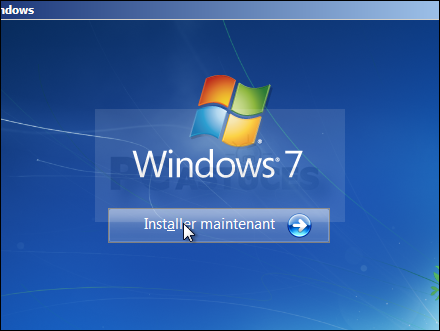Installer Windows 7

You have to specially prepare the USB device and then properly copy the Windows 7 install files to it before it'll work as you expect. You're in a similar, but slightly easier to solve, situation if you've purchased a Windows 7 directly from Microsoft and need that on a flash drive. No matter what situation you're in, just follow the instructions below to install Windows 7 from a USB device. Note: The following tutorial applies equally to whatever edition of Windows 7 you have a disc or ISO image of: Windows 7 Ultimate, Professional, Home Premium, etc.
If you are on Windows 7, then you must have Windows Installer 5. Windows Installer 5.0 is available with both Microsoft Windows 7 and Windows Server 2008 R2.
What You'll Need: • A Windows 7 ISO or DVD [See for information on getting an ISO image, or buy a new Windows 7 DVD from.] • A 4 GB (or larger) flash drive • Access to a computer with Windows 7, 8, 10, Vista, or XP installed and working properly, as well as with a DVD drive if you have a Windows 7 DVD How to Install Windows 7 From USB Correctly preparing a USB drive for use as an installation source for Windows 7 will take around 15 to 30 minutes depending on your computer speed and what edition of Windows 7 you have on DVD or in ISO format. Important: Start with Step 1 below if you have a Windows 7 DVD or Step 2 if you have a Windows 7 ISO image.
If you already know how to create ISO images, fantastic: do it, and then come back here for further instructions on what to do with it. If you've never created an ISO file from a disc before, check out the tutorial linked above. It'll walk you through installing some free software and then using it to create the ISO. Keygen For Acdsee Pro 8.
An ISO image is a single file that perfectly represents a disc. In this case, your Windows 7 installation DVD.
Next we're going to work on properly getting that Windows 7 ISO image you just created onto the flash drive. Once downloaded, execute the file and follow the installation wizard. This free program from Microsoft, which works in,, Windows 7,, or, will correctly the USB drive and then copy the contents of your Windows 7 ISO file to the drive. • Start the Windows 7 USB DVD Download Tool program, which is probably located in your Start menu or on your Start screen, as well as on your Desktop. • On the Step 1 of 4: Choose ISO file screen, click Browse.
• Locate, and then select, your Windows 7 ISO file. Then click Open. Note: If you downloaded Windows 7 directly from Microsoft, check for the ISO image wherever you tend to store downloaded files. If you manually created an ISO file from your Windows 7 DVD in Step 1 above then it will be wherever you saved it to. • Click Open. • Click Next once you're back on the Step 1 of 4 screen. • Click USB device on the Step 2 of 4: Choose media type screen.
• On the Step 3 of 4: Insert USB device screen, choose the flash drive or you want to put the Windows 7 installation files on. Tip: If you haven't yet plugged in the flash drive or other device you're using, you can do that now. Just click the blue refresh button to make it show up in the list. • Click the Begin copying button. • Click Erase USB Device if you're prompted to do so on a Not Enough Free Space window. Then click Yes to the confirmation in the next window. Note: If you don't see this it just means that the flash drive or external you've selected is already empty.
Download Macromedia Director Mx 2004 Upgrade. Kendrick Lamar Gkmc Sharebeast more. Important: Any data you have on this USB drive will be erased as part of this process. • On Step 4 of 4: Creating bootable USB device, wait for the Windows 7 USB DVD Download Tool to the USB drive and then copy the Windows 7 installation files to it from the ISO image you provided. You'll see a Status of Formatting for several seconds, followed by Copying files.